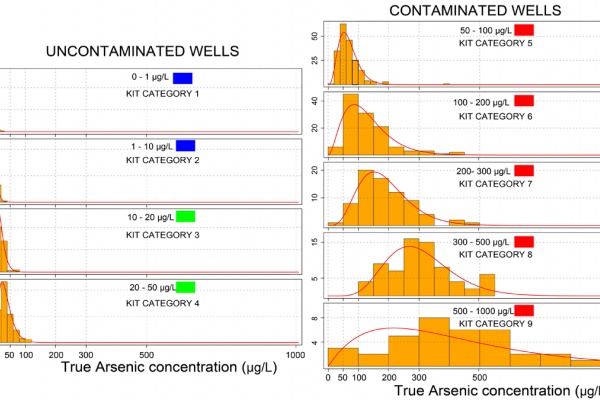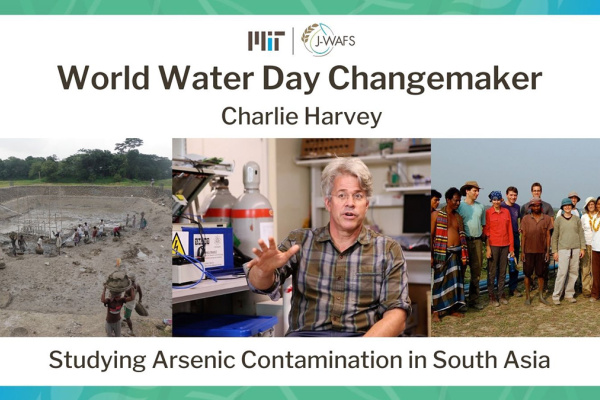Our Research What controls arsenic contamination in South Asia? Making sense of two-decades of disjointed data
Video credit: Harvey Research team
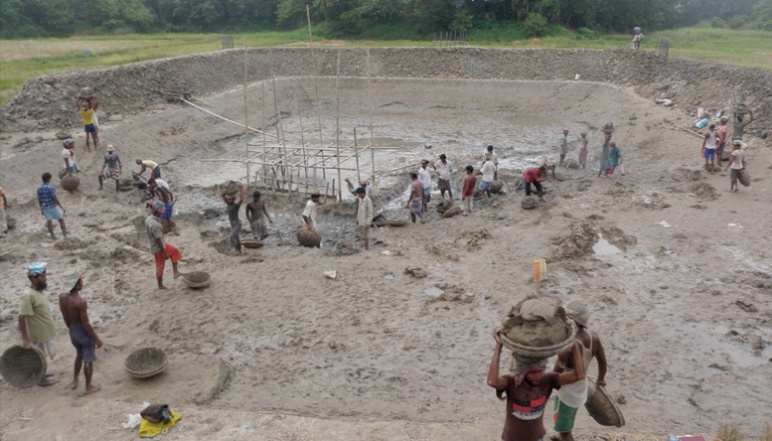
Photo credit: Harvey Research Team
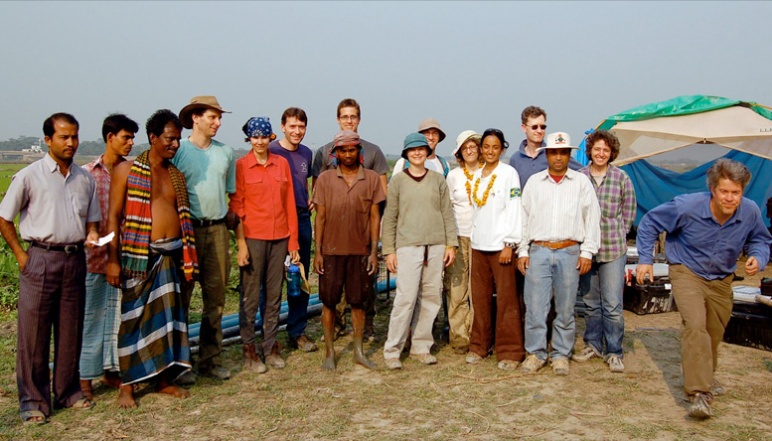
Photo credit: Harvey Research Team

Photo credit: Harvey Research Team
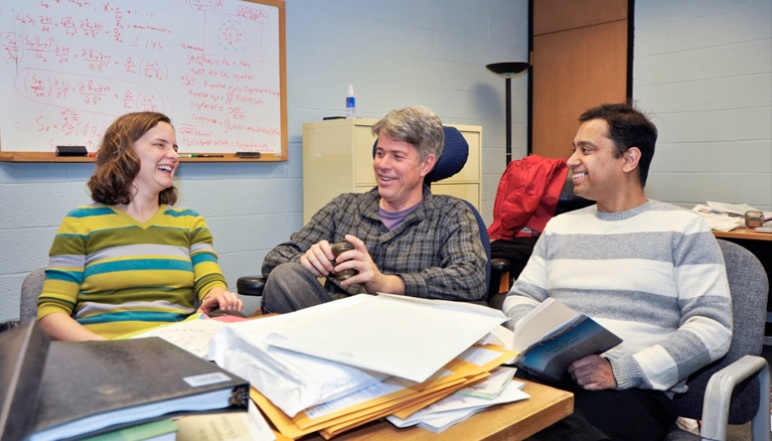
Photo credit: Harvey Research Team
Principal Investigator
Charles Harvey
- Professor
- Department of Civil and Environmental Engineering
Charles Harvey is a hydrologist and biogeochemist. His theoretical work has lead to fundamental advances in understanding chemical transport and reaction in flowing groundwater. He has also built large-scale field programs to investigate the interaction of groundwater and seawater in the US, arsenic contamination of groundwater in Bangladesh and Vietnam, and the coupled hydrology and ecology of peat swamp forests in Borneo. He was awarded the M. King Hubbert award for major contributions to the groundwater industry, the Prince Sultan bin Abdulaziz International Prize for Water and the Geological Society of America Meinzer Award for fundamental contributions to hydrology.
Challenge:
How can we safely site wells to prevent arsenic poisoning from groundwater in Bangladesh?
Research Strategy
- Find spatial features of dissolved arsenic that are common across the region and conduct geostatistical analysis of combined data sets
- Determine if arsenic concentrations are shifting through statistical analysis combined with mass-balance models of water and arsenic
- Construct dose-response models built on both drinking water and urine data
- Design schemes for future data collection that are optimized to test important hypothesis and make recommendations for siting of safe wells and managing groundwater resources to control arsenic contamination
Project description
Over one-hundred million people in Bangladesh, India, Nepal, Pakistan, Cambodia, Vietnam, and Myanmar are chronically exposed to dangerous concentrations of arsenic because they rely on groundwater that is contaminated by naturally occurring arsenic. The most effective response to this crisis has been to encourage people to switch to safe wells.
In Bangladesh, where the problem is most severe, more than 50% have switched to either neighboring safe wells or newly installed deep wells that extract from below the contaminated level. The long-term risk of this strategy is clear: It relies on the continued production of safe water from regions of aquifers that are dangerously contaminated nearby. Although the strategy appears to be working for most wells, there is already evidence that contamination is increasing in some areas where groundwater flow is accelerated by municipal or irrigation pumping. At this point, we have little capacity to predict long-term groundwater safety even as aquifers are extensively pumped.
Harvey and his team are developing better predictive models of arsenic contamination by taking advantage of the large number of disjointed and uncoordinated data sets (including their own) that have been collected and published over the last two decades. They are identifying features, spatial patterns, and temporal trends that are common across data sets of arsenic concentrations. Based on this analysis they are determining the types of models that either can explain, or are inconsistent with these factors.
The results of this work will be used to (1) devise future data collection methodologies targeted for testing important hypotheses, and (2) make recommendations for siting safe wells in areas with contaminated groundwater and for managing groundwater resources.
Outcomes
- A meta-analysis of water isotope data from across the Bengal Basin revealed that the source of groundwater has shifted over the last sixty years from direct precipitation to infiltration of water from irrigated rice fields and constructed ponds that have been subject to evaporation
- Constructed a mass balance model that reconciles both water and arsenic balances in the human body resulting in a more accurate estimate of human exposure to arsenic than models that only consider household arsenic. Model showed that people in Bangladesh consume more contaminated water outside the household than previous methods have suggested
- An analysis of arsenic concentrations measured from 10,000 wells showed that using more low-accuracy field kits will lead to much greater improvements in population health, rather than measuring fewer wells using high-accuracy laboratory-based methods
- Determined that blanket well testing, education campaigns, and community wells with measurements of arsenic concentration sited, correlate with a decline in arsenic exposure in a village in Bangladesh
Publications
Well-switching to reduce arsenic exposure in Bangladesh: Making the most of inaccurate field kit measurements
Yusuf Jameel, Rajib Hassan Mozumder, Alexander van Geen, and Charles F. Harvey, Advancing Earth and Space Science, 2021
High-arsenic groundwater in the southwestern Bengal Basin caused by a lithologically controlled deep flow system
M. R. Khan, H. A. Michael, B. Nath, B. L. Huhmann, C. F. Harvey, A. Mukherjee, I. Choudhury, M. Chakraborty, M. S. Ullah, K. M. Ahmed, S. L. Goodbred, P. Schlosser, B. C. Bostick, B. J. Mailloux, T. Ellis, and A. van Geen, Advancing Earth and Science Space, 2019
Changes in arsenic exposure in Araihazar, Bangladesh from 2001 through 2015 following a blanket well testing and education campaign
Brittany L. Huhmann, Charles F. Harvey, Ana Navas-Acien, Joseph Graziano, Faruque Parvez, Yu Chen, Maria Argos, Alauddin Ahmed, A.K.M. Rabiul Hasan, Habibul Ahsan, and Alexander van Geen, Environment International, 2019
Inversion of high-arsenic soil for improved rice yield in Bangladesh
Huhmann, Brittany Lynn, Charles F Harvey, Anjal Uddin, Imtiaz Choudhury, Kazi Matin Ahmed, John M Duxbury, Tyler Ellis, and Alexander Van Geen, Environmental Science & Technology, 2019
News
Additional Details
Impact Areas
- Water
Research Themes
- Sensors & Monitoring
- Water Resources & Infrastructure
- Economics, Policy, & Practices
- Modeling & Data Analytics
- Equity & Access
Year Funded
- 2018
Grant Type
- Seed Grant
Status
- Completed


